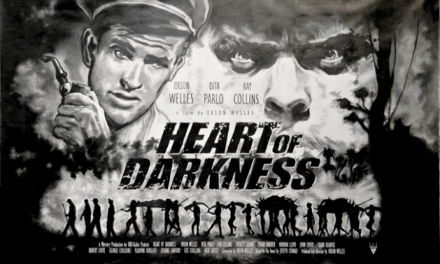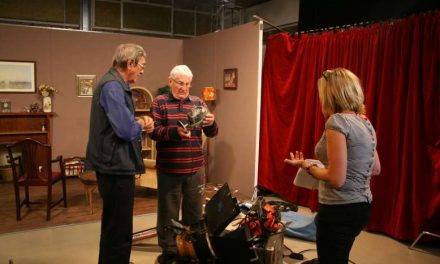CFP: Queering Girlhood – Special Issue of Girlhood Studies
 In the more than ten years since Marnina Gonick directly challenged the field by asking, “Are queer girls, girls?” (2006: 122), girls’ studies has grown into a formidable, expansive, and increasingly recognized area of academic discourse. Yet, while one might not characterize the “pairing of the words queer and girl” as “virtually unthinkable” in the scholarship today, as Susan Driver (2007: 28) found it then, there remains a distressing inability to dislodge girlhood from its (hetero)normative grounds. The stubborn persistence of white, affluent, able-bodied, Western heteronormative girlhood continues to plague critical work on girls and girl cultures, even as there are repeated calls by major scholars in the field to subvert and complicate this normative girl (Kearney 2011; Projansky 2014). Particularly with the increasing visibility and recognition of transgender and gender diverse girls, the queer girl again most pressingly (and perhaps inevitably) confronts girls’ studies with the imperative to re-examine the very definition of girlhood—a project that, as Whitney Monaghan’s recent work promises, might productively “denaturalise” the “girl” (2016: 35) anew as an entrée into further critical inquiry.
In the more than ten years since Marnina Gonick directly challenged the field by asking, “Are queer girls, girls?” (2006: 122), girls’ studies has grown into a formidable, expansive, and increasingly recognized area of academic discourse. Yet, while one might not characterize the “pairing of the words queer and girl” as “virtually unthinkable” in the scholarship today, as Susan Driver (2007: 28) found it then, there remains a distressing inability to dislodge girlhood from its (hetero)normative grounds. The stubborn persistence of white, affluent, able-bodied, Western heteronormative girlhood continues to plague critical work on girls and girl cultures, even as there are repeated calls by major scholars in the field to subvert and complicate this normative girl (Kearney 2011; Projansky 2014). Particularly with the increasing visibility and recognition of transgender and gender diverse girls, the queer girl again most pressingly (and perhaps inevitably) confronts girls’ studies with the imperative to re-examine the very definition of girlhood—a project that, as Whitney Monaghan’s recent work promises, might productively “denaturalise” the “girl” (2016: 35) anew as an entrée into further critical inquiry.
 This Special Issue of Girlhood Studies: An Interdisciplinary Journal takes up the project of bringing the queer girl from the margins to the center of girls’ studies by inviting articles from various disciplinary perspectives that explore the experiences and representations of queer girls, as well as the impact of queer girl cultures on the understanding of girlhood. When they appear in public discourse or popular representations, which happens far too infrequently, queer girls usually act as representative of a problem to be solved, a phase to grow out of, or a minor point within a larger debate about young female sexuality. In considerations of queer youth, they again find themselves marginalized or silenced by a seemingly inescapable focus on their male peers. Theirs are, in short, voices we too rarely hear and experiences too rarely figured. Yet, because they are so obviously marginalized by and/or resistant to normative constructions of gender and sexuality, queer girls provoke a number of important critical questions for definitions of youth and of girlhood.
This Special Issue of Girlhood Studies: An Interdisciplinary Journal takes up the project of bringing the queer girl from the margins to the center of girls’ studies by inviting articles from various disciplinary perspectives that explore the experiences and representations of queer girls, as well as the impact of queer girl cultures on the understanding of girlhood. When they appear in public discourse or popular representations, which happens far too infrequently, queer girls usually act as representative of a problem to be solved, a phase to grow out of, or a minor point within a larger debate about young female sexuality. In considerations of queer youth, they again find themselves marginalized or silenced by a seemingly inescapable focus on their male peers. Theirs are, in short, voices we too rarely hear and experiences too rarely figured. Yet, because they are so obviously marginalized by and/or resistant to normative constructions of gender and sexuality, queer girls provoke a number of important critical questions for definitions of youth and of girlhood.
Contributions to this special issue may consider, among others, the following critical questions.
- How have normative notions of heterosexual childhood/adolescent development dominated understandings of young female sexuality and, therefore, disregarded the complexities of female sexuality and pleasure, or relegated queer sexualities to what is thought of as a temporary phase?
- How might a disruption of gender binaries or a rejection of fixed gendered designations truly redefine girlhood which has for so long been founded in notions of femininity or so called feminine (and masculine) experiences or behaviors?
- How does the queer girl have an impact on explorations of female friendship, female bonding, and close-knit groups such as those found in fan cultures or creative production?
- What histories or archives of queer female experience have been lost from view or silenced in service of a dominant narrative on girlhood?
- How are queer girls shaped by their position at the intersection of identities based in race, age, class, and/or ability?
- How do queer girls consume, participate in, critique, and/or negotiate the dominant discourses around girlhood in popular culture that so often exclude their experiences? Do queer girls consume popular culture differently? If so, how? Do queer girls produce different popular culture and other creative media?
- How do definitions and experiences of queer girlhood vary around the world? How has a particularly white and Western figure of queer girlhood limited the sense of diverse queer girl experiences?
- What youth subcultures do queer girls participate in and/or create and how might their subcultural practices challenge prevailing notions of female subcultural experiences?
- How have queer girls engaged with new technologies such as digital media production, mobile apps, social media, and platforms like YouTube and blogging, and for what purposes or ends?
- What kinds of social and political activism have queer girls been engaged in or even spearheaded and how might their practices further inform our notion of queer and/or girl activism more broadly?
Guest Editor
Barbara Jane Brickman is guest-editing this themed issue. She is currently an Assistant Professor of Media and Gender Studies at the University of Alabama. Her research interests are in girls’ studies, feminist film theory, gay and lesbian studies, and American popular culture. Since the publication of her first book, New American Teenagers: The Lost Generation of Youth in 1970s Film, she has written a volume on the 1978 film musical Grease for the Cinema and Youth Cultures series. She is also the founder and director of the Druid City Girls Media Camp in Tuscaloosa, AL.
Article submission
 Please direct inquiries to Barbara Jane Brickman (bjbrickman@ua.edu) and send expressions of interest and/or abstracts to her by 19 February 2018. Full manuscripts are due by 16 July 2018. Authors should provide a cover page giving brief biographical details (up to 100 words), institutional affiliation(s) and full contact information, including an email address.
Please direct inquiries to Barbara Jane Brickman (bjbrickman@ua.edu) and send expressions of interest and/or abstracts to her by 19 February 2018. Full manuscripts are due by 16 July 2018. Authors should provide a cover page giving brief biographical details (up to 100 words), institutional affiliation(s) and full contact information, including an email address.
Articles may be no longer than 6,500 words including the abstract (up to 150 words), keywords (6 to 8 in alphabetical order), notes, captions and tables, acknowledgements (if any), biographical details (taken from the cover page), and references. Images in a text count for 200 words each. Girlhood Studies, following Berghahn’s preferred house style, uses a modified Chicago Style.
Please refer to the Style Guide on the website: http://journals.berghahnbooks.com/_uploads/ghs/girlhood-studies_style_guide.pdf
If images are used, authors are expected to secure the copyright themselves.
For more information, see www.berghahnjournals.com/girlhood-studies
References
Driver, Susan. 2007. Queer Girls and Popular Culture: Reading, Resisting, and Creating Media. New York: Peter Lang.
Gonick, Marnina. 2006. “Sugar and Spice and Something More Than Nice? Queer Girls and Transformations of Social Exclusion.” In Girlhood: Redefining the Limits, ed. Yasmin Jiwani, Candis Steenbergen and Claudia Mitchell, 122–137. Montreal: Black Rose Books.
Kearney, Mary Celeste. 2011. “Girls’ Media Studies 2.0.” In Mediated Girlhoods: New Explorations of Girls’ Media Culture, ed. Mary Celeste Kearney, 1–14. New York: Peter Lang.
Monaghan, Whitney. 2016. Queer Girls, Temporality and Screen Media: Not ‘Just a Phase.’ London: Palgrave.
Projansky, Sarah. 2014. Spectacular Girls: Media Fascination and Celebrity Culture. New York: NYU Press.





